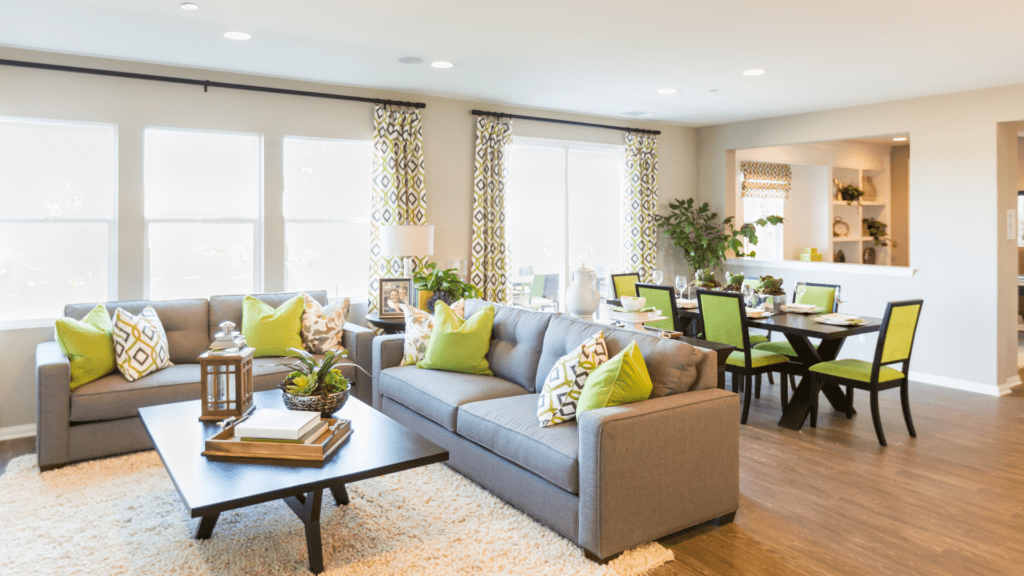Decisions About Age Challenges During Retirement.
Getting old is an inevitable part of life that brings with it a host of changes impacting financial stability, health, and mobility.
As we grow older, we can sometimes face a decline in physical abilities, which can range from reduced strength and endurance to mobility impairments.
These physical shifts necessitate a reevaluation of living arrangements and lifestyle choices to ensure safety and comfort.
Increased medical needs also become a significant aspect of aging, with chronic conditions such as arthritis, cardiovascular diseases, and diabetes becoming more prevalent.
This necessitates regular medical care and, in some cases, specialized services that can be costly and require thoughtful planning.
Financial pressures also mount as one ages. Retirement can sometimes means a vast reduction in regular income, necessitating a reliance on savings, pensions, superannuation and social security benefits.
The cost of healthcare, long-term care, and potential home modifications to accommodate mobility issues can strain financial resources.
The need for a thorough and ongoing assessment of one’s financial situation is crucial to managing these challenges effectively.
Planning and budgeting become paramount to ensure that financial resources are allocated wisely and can sustain an individual’s needs throughout their retirement years.
Moreover, it is essential to understand that these challenges are not static. The health and financial status of the elderly can change rapidly, necessitating continuous reassessment and adaptation of their living situations.
Regular evaluations can help identify emerging needs and enable timely interventions, whether it involves adjusting living arrangements, seeking additional healthcare support, or reevaluating financial plans.
Engaging with healthcare professionals, financial advisors, and family members can provide a comprehensive approach to managing these complexities.
By acknowledging and addressing the multifaceted realities of aging, elderly individuals and their families can make more informed decisions, promoting a higher quality of life and greater peace of mind during the retirement years.
Recognizing When a Change in Living Situation Is Needed.
We all age differently but on average, once we get past a certain age, there will be additional challenges and this can often necessitate a change in living situation.
Recognizing these signs early can help in making informed decisions that enhance the quality of life.
One of the most apparent indicators is the difficulty in maintaining the current home. Tasks that were once routine, such as cleaning, yard work, or even basic home repairs, may become increasingly burdensome.
This decline in physical capability not only impacts our ability to live independently but also poses a few safety risks.
Increased healthcare needs are another critical factor prompting the consideration of different living arrangements.
Chronic illnesses, frequent medical appointments, and the need for constant medication management can overwhelm both the elderly and their caregivers.
When the complexity of medical care surpasses what can be comfortably managed at home, it may be time to explore options like assisted living facilities, which offer professional healthcare support.
Isolation can also signal the need for a change. Social interactions significantly contribute to mental and emotional well-being.
However, mobility limitations, the loss of a spouse, or friends and family members moving away can lead to increased loneliness and depression.
Living arrangements that provide social engagement opportunities, such as retirement communities, can offer a remedy to this isolation, ensuring that the elderly remain connected and active.
When you combine the factors of difficulty maintaining your home, increased healthcare needs, and feeling lonely and isolated, it does start to look as though a change in living situation might be necessary.
Each situation is unique of course, and the decision to transition to a different living arrangement should be made with careful consideration of the individual’s specific needs and preferences.
By paying attention to these signs, families can ensure that their elderly loved ones continue to live in an environment that promotes safety, health, and social well-being.
Exploring The Many Alternative Living Situation Options.
When planning for retirement, one of the crucial decisions to make involves choosing an appropriate living situation.
Various options are available, each catering to different needs, preferences, and levels of care.
Understanding these options can help elderly individuals and their families make informed decisions.
Firstly, downsizing is a popular choice for many retirees. This involves moving to a smaller, more manageable home.
Downsizing can reduce the burden of home maintenance and lower living costs, making it an attractive option for those who wish to maintain their independence while simplifying their lifestyle.
For those requiring more support, assisted living facilities offer a balance between independence and assistance.
These facilities provide personal care services, such as help with daily activities like bathing, dressing, and medication management.
Residents typically have their own apartments but benefit from communal dining, social activities, and access to 24-hour staff.
On the other hand, nursing homes are designed for individuals who need extensive medical care and supervision.
These facilities are staffed with healthcare professionals, including nurses and doctors, who provide round-the-clock medical attention.
Nursing homes are suitable for elderly individuals with chronic health conditions or those recovering from significant medical events.
Retirement communities, also known as 55+ communities or senior living communities, offer an active and social environment for retirees.
These communities often include various amenities such as fitness centers, swimming pools, and organized activities.
While they do not typically provide medical care, they foster a strong sense of community and are ideal for those seeking an engaging lifestyle post-retirement.
Independent living facilities cater to seniors who are capable of living independently but prefer a community setting with access to convenient services and social opportunities.
These facilities offer private apartments along with amenities like housekeeping, transportation, and recreational activities.
They are perfect for those who want to enjoy their retirement years with minimal responsibilities and maximum leisure.
Each of these living situation options offers distinct advantages and caters to different levels of care and support needs.
By carefully evaluating the benefits and services of each, elderly individuals and their families can make well-informed decisions that best suit their circumstances and preferences.
Evaluating Financial Impact Of The Various Living Options.
When navigating the complexities of living arrangements in retirement, evaluating the financial impact of various options is crucial.
This process involves a thorough analysis of several key factors: current market housing costs, healthcare expenses, transportation needs, and lifestyle expenses.
Understanding these components can help retirees make informed decisions that align with their budget and lifestyle preferences.
Current market housing costs are the foundational element to consider. Whether opting for independent living, assisted living, or continuing care retirement communities (CCRCs), each option comes with its own set of financial implications.
Independent living typically involves costs associated with mortgage or rent, property taxes, and maintenance. In contrast, assisted living and CCRCs often come with a more comprehensive fee structure that includes housing, meals, and some healthcare services.
Comparing these costs against the retiree’s financial resources, such as pensions, savings, and social security, is essential.
Healthcare expenses are another critical component. As individuals age, healthcare needs often increase, making it vital to factor in potential medical costs.
Evaluate the coverage provided by Medicare, private insurance, or long-term care insurance. Additionally, consider out-of-pocket expenses for medications, routine check-ups, and potential emergency care.
Some living options, like CCRCs, offer extensive healthcare services, which may mitigate unexpected costs but typically come with higher upfront fees.
Transportation needs also play a significant role in determining the financial viability of a living option.
Assess the accessibility of public transportation and the cost of maintaining a personal vehicle.
Some retirement communities offer transportation services, which can reduce the need for a personal vehicle and the associated expenses.
Lifestyle expenses, including food, entertainment, and social activities, should be considered. The cost of living can vary significantly based on location and the amenities provided by the chosen living option.
Budgeting for these everyday expenses ensures a comfortable and enjoyable retirement experience.
To make an informed decision, retirees should compare the total costs and benefits of each living option.
Creating a detailed budget and consulting with financial advisors can provide clarity and confidence in choosing the best living arrangement that aligns with financial capabilities and personal preferences.
Strategies to Maximize Financial Resources in Later Life.
As we transition into retirement, ensuring a stable and sufficient financial foundation becomes paramount.
One effective strategy to maximize financial resources in later life is through the use of reverse mortgages.
A reverse mortgage allows homeowners aged 62 and older to convert a portion of their home equity into cash without having to sell their home.
This can provide a steady stream of income or a lump sum payment, thereby supplementing retirement funds and affording various living options.
Another approach involves asset liquidation. This process entails selling non-essential assets such as secondary properties, vehicles, or valuable collectibles.
By converting these assets into liquid cash, retirees can significantly bolster their financial reserves.
This can be particularly advantageous when facing unexpected medical expenses or when considering a move to a more suitable living environment, such as an assisted living facility.
In addition to these methods, retirees should also explore comprehensive financial planning tools.
For instance, annuities can provide a reliable income stream over a specified period or even for life, offering financial stability and predictability.
Long-term care insurance is another critical component, covering potential future healthcare costs that can otherwise deplete savings.
Moreover, strategic investment in diversified portfolios can yield additional income while mitigating risks.
Utilizing these strategies in tandem can significantly enhance financial security. It enables retirees to maintain their desired lifestyle and adapt to changing needs without financial strain.
Consulting with a financial advisor can further tailor these strategies to individual circumstances, ensuring a personalized approach to managing resources effectively.
Ultimately, a well-planned financial strategy can empower retirees to navigate their later years with confidence and peace of mind.
Maintaining Emotional Balance and Mental Wellbeing.
Maintaining emotional balance and mental wellbeing is crucial when considering and transitioning to a new living situation in retirement.
The process can be emotionally challenging, as it often involves significant changes that may evoke a range of feelings, from excitement to fear and anxiety.
The prospect of leaving a familiar environment, coupled with concerns about losing independence, can be particularly daunting for many elderly individuals.
One of the primary emotional challenges is the fear of change. Moving to a new living situation often means leaving behind a home filled with memories and a community of familiar faces.
This apprehension can be mitigated by involving the individual in the decision-making process.
Open and honest communication about the reasons for the move and how it can enhance their quality of life can alleviate some of the fear.
Providing ample time for adjustment and encouraging visits to the new location before the move can also help ease the transition.
Loss of independence is another significant concern. Many elderly individuals may feel a sense of vulnerability and a loss of control over their lives.
To address this, it is essential to highlight the aspects of the new living situation that promote autonomy. For instance, assisted living facilities often offer various activities and opportunities for social interaction, which can enhance a sense of independence and community.
Emphasizing these positive aspects can help individuals feel more in control of their new environment.
Coping with these feelings requires a supportive network. Family, friends, and healthcare professionals can play a pivotal role in providing emotional support.
Regular check-ins and visits from loved ones can make a significant difference in reducing feelings of isolation and loneliness.
Additionally, engaging in hobbies and activities that the individual enjoys can foster a sense of purpose and belonging.
Incorporating mindfulness practices, such as meditation can also be beneficial as they can help manage stress and promote emotional balance.
Encouraging the elderly to express their feelings openly, whether through conversation, journaling, or counseling, can further aid in processing emotions and maintaining mental wellbeing during this significant life transition.
Ensuring Quality of Life and Independence.
When making decisions about the best living situation for elderly individuals, it is paramount to prioritize their quality of life and independence.
A thoughtful approach that considers various aspects of their daily lives can significantly enhance their overall well-being.
One of the primary considerations is the potential for family support. Proximity to family members can provide not only emotional comfort but also practical assistance with day-to-day tasks and medical care, fostering a sense of security and belonging.
Opportunities for social connections also play a crucial role in maintaining quality of life.
Isolation can lead to feelings of loneliness and depression, which can negatively impact both mental and physical health.
Therefore, selecting a living situation that offers ample chances for social interaction is vital.
This could be through organized community events, common areas for socializing, or nearby facilities such as senior centers that host activities and group outings.
Access to amenities and activities that promote overall well-being is another essential factor. A living environment that provides or is close to recreational facilities, such as parks, fitness centers, or clubs, encourages an active lifestyle.
Additionally, having access to healthcare facilities is critical. Regular check-ups and easy access to medical services ensure that health issues are promptly addressed, contributing to a better quality of life.
The living arrangement should facilitate a degree of independence. Features like easy-to-navigate spaces, assistive technologies, and supportive community services allow seniors to manage their daily routines with minimal assistance. This autonomy not only boosts their self-esteem but also helps in maintaining their physical and cognitive functions.
Selecting the right living situation for seniors involves a holistic consideration of factors that contribute to their quality of life and independence.
Family support, social connections, access to amenities, and the ability to live independently all interlink to create an environment where elderly individuals can thrive during their retirement years.
Making Informed Decisions for the Future.
As individuals enter retirement, the decisions surrounding living situations become increasingly significant.
Over the course of this article, I tried to cover the multifaceted challenges that retirees face, touching upon financial constraints, health considerations, and mobility issues.
Understanding these aspects is crucial for making informed choices that will best serve one’s long-term well-being.
Financial stability is a cornerstone in planning for retirement. It’s essential to assess all available resources and potential expenses, ensuring that the chosen living situation aligns with one’s budgetary constraints.
This includes not only daily living costs but also unforeseen expenses that may arise due to health-related needs or other contingencies.
Sound financial planning can provide a buffer against economic uncertainties, enabling a more secure and worry-free retirement.
Health is another critical factor that significantly influences living situation decisions. The aging process often brings about various health challenges, necessitating environments that can cater to these evolving needs.
Whether it’s access to medical facilities, availability of in-home care, or proximity to family members who can provide support, prioritizing health considerations ensures that retirees can maintain a high quality of life.
Mobility issues further complicate the decision-making process. As mobility decreases with age, it’s important to choose living arrangements that are adaptable to these changes.
This might involve selecting homes with fewer stairs, installing assistive devices, or considering communities designed with accessibility in mind.
By planning ahead, retirees can create a living environment that remains comfortable and safe as their mobility needs evolve.
In light of these considerations, it is imperative to approach these decisions with thorough research and professional advice.
Consulting with financial advisors, healthcare providers, and eldercare specialists can provide invaluable insights and guidance.
Ultimately, the goal is to secure a living situation that promotes long-term health, happiness, and financial stability, allowing retirees to enjoy their golden years with peace of mind.








